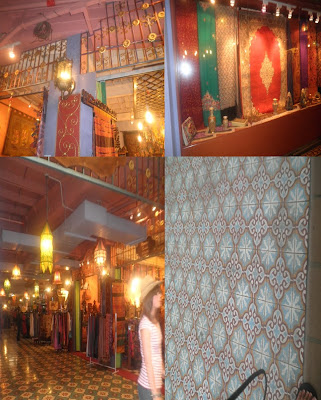1.Embrace of the future
Description: PETRONAS twin towers at KLCC. 09/07/2010
Explanation: The future is the time period in which all things become possible, and this picture is proving it all.
With increase in populations and advancement most of the buildings in Asia nowadays are growing in height. In KLCC surrounding’s the view of skyscrapers all around is just a taste of what our future will be; surrounded by beautiful, majestic and imposing buildings of 80 meters. Their designs, materials and most importantly their interior comfort, with wonderful views that varies from one corner to another, this is what these buildings brings to us. An incomparable sense of esthetic, by materials such as steel, glass, reinforced concrete and granite.
2. Freezing of the Past
Description: traditional Chinese temple in Market place on the 09/07/2010
Explanation: The past is contrasted with the present. It is also regarded as the conglomerate of events that happened in a certain point in time. But sometimes in some places of the world that “past” is still living. Though out the world and space time there is only one thing that will never change; our temples. These architectures have been repeated over and over and although its construction materials may have changed from Wooden timber, curtain walls or door panels and tiles to metal, bricks and concrete; rarely its designs. On the top of the front door you can see vestige of Chinese drawings that most of the time tells a specific story of their culture.
3.Transition between the Past and the Present
Description: KL market place on the 09/07/2010
Explanation: From past to present our architectures and architectural technique have changed. Our cities, buildings and homes have evolved to better fit our new way of living. There is a still living era of our past modified by the new modern habits of our country. In this picture we can observe that this heritage though being old has its own charm and aesthetic touch, I would even say a colonial touch. It shows the transition from pass architecture being forced to marry modern life. You may observe the traditional designs at the top of the windows, and the windows themselves that is constructed to allow ventilation into the room even in times of rain.
4.Cultural Crossroads
Description: KL market place on the 09/07/2010
Explanation: A cultural crossroad is where many cultures meet and merge. Malaysia though being an Asian country it has not escaped from western influence. In this picture u can see the use of western designs for aesthetic but also one characteristic of Chinese Malay houses, are the tiles. The structural principles of Chinese architecture have remained largely unchanged, the main changes being only the decorative details. This started in the middle of the nineteenth century, the need for shopping centers, offices, conventional halls and many others led to a blend of Western and traditional Chinese architectural styles.
5. Collapsing Identity
Description: little India in KL market place on the 09/07/2010
Explanation: Somewhere along the way Malaysian architecture has lost its Asian touch in favor of a more modern one but certainly less charming. This type of contemporary design has today become a rare beauty although it is greatly appreciated by foreigners. The tiles and lamps is an identity, a unique conception and expression. Unique, original, high quality tiles made by generations of expertise that is intriguing. Exact designs and vivid colours that was traditionally homemade. These lamps you see in the picture originate from Arabic lamps made of brass, with complicated ornaments. Its new designs had its new ability to be fixed on a wall is due to modernity.





No comments:
Post a Comment